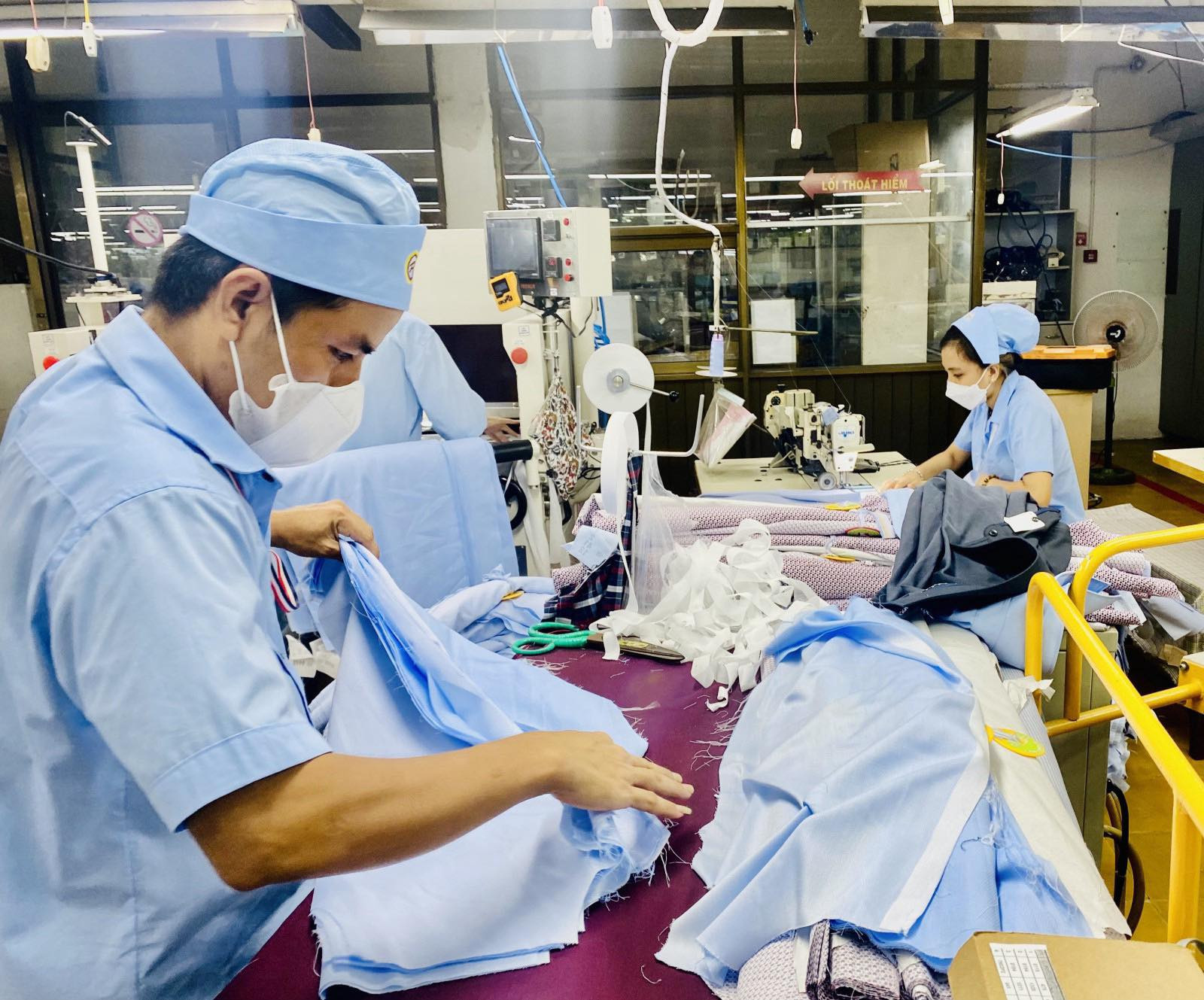
Phan Thanh Duc, CEO of Binh Duong Garment, told VietNamNet that the company began discussing the transition to green production five years ago.
“We then realized that going green is the trend all over the world. If we want to sell products, we need to undergo the transition, which is irreversible,” Duc said.
Binh Duong Garment mostly exports products to Europe and the US, and the importers have systems of suppliers in all Southeast Asian countries. Therefore, if the company cannot meet requirements on green products set by the importers, it will lose clients.
Duc said foreign partners have set more green requirements when negotiating with the company, so the garment producer uses green inputs and outputs. For example, Binh Duong Garment has to choose fabric dyed by organic materials rather than chemicals. Also, it is better to choose recyclable yarn. As for accessories, the company now uses paper instead of plastics.
“The company is drawing up a plan on building a new factory which will run green, from input materials to waste, and will use renewables,” Duc said.
The go green wave not only can be seen in processing and manufacturing, but also in the service sector.
At COP 26, the Vietnamese government committed to obtain net-zero emissions by 2050.
Tran Tien Dung, chair of the Hai Phong Logistics Association, said the time to 2050 is rather long, but most high-end clients from the US and Europe pledged to obtain net zero sooner, by 2030. Therefore, Vietnam’s businesses need to start the sustainable development now to both compete with other countries in attracting foreign direct investment (FDI), and among domestic service providers.
In principle, businesses that begin sooner will have more opportunities to attract high-end clients.
IZs have to be green
Vuong Thi Minh Hieu, deputy director of the EZ (Economic Zone) Management Department under the Ministry of Planning and Investment (MPI), said Vietnam is a signatory of 16 signed FTAs (free trade agreements) and it is in negotiations for another three FTAs.
Under the FTAs, the requirements on value chain, industry chain and clean green production stages are very important for Vietnamese businesses to be able to enter choosy markets.
The goal for sustainable industrial development is included in UN commitments on sustainable development. Meanwhile, the national strategy on green growth in 2021-2020, as well as the government’s commitments at COP 26, have pressing requirements on green industrial production and green growth.
Under the green growth trend, traditional Industrial Zones will be changed and developed in a sustainable way, approaching international standards.
The principle of developing sustainable IZs (industrial zones) comes from industrial ecology and the conversion from a linear economy to a circular economy, where the industrial ecosystem is developed as a natural ecosystem and the products of one production process can be the input of another production process.
Becamex IDC, one of the largest IZ developers in Binh Duong, said that enterprises needs to prepare well to adapt to the new conditions.
The industrial real estate developer is following a green and smart urban industry ecosystem based on ESG standards and with a vision towards Net Zero. The globalization trend now is shifting to sustainable development and responsible business.
In the ecosystem, green and smart industry and urban areas will increase the proportion of clean energy use; and regulate IZs in accordance with digitization and greenery.
Regarding clean energy, Becamex VSIP power company will provide clean energy solutions to its clients, and implement pilot projects on rooftop solar power storage systems.
Becamex has also set the goal of planning 1 million green trees, which is equivalent to the cut of 85,000 tons of CO2. Using renewable energy in Becamex’s ecosystem is equivalent to 2 million tons of CO2 cut each year.
Dong Nai Party Committee Secretary Nguyen Hong Linh said many businesses in the province have been aware of the green trends. Newly built IZs have begun applying the ecology model in accordance with Decree 35, while old IZs need more time for their transition process.
Meanwhile, plastics, steel, cement and aviation industries have vowed to reduce emissions to the lowest possible levels.
Tam An